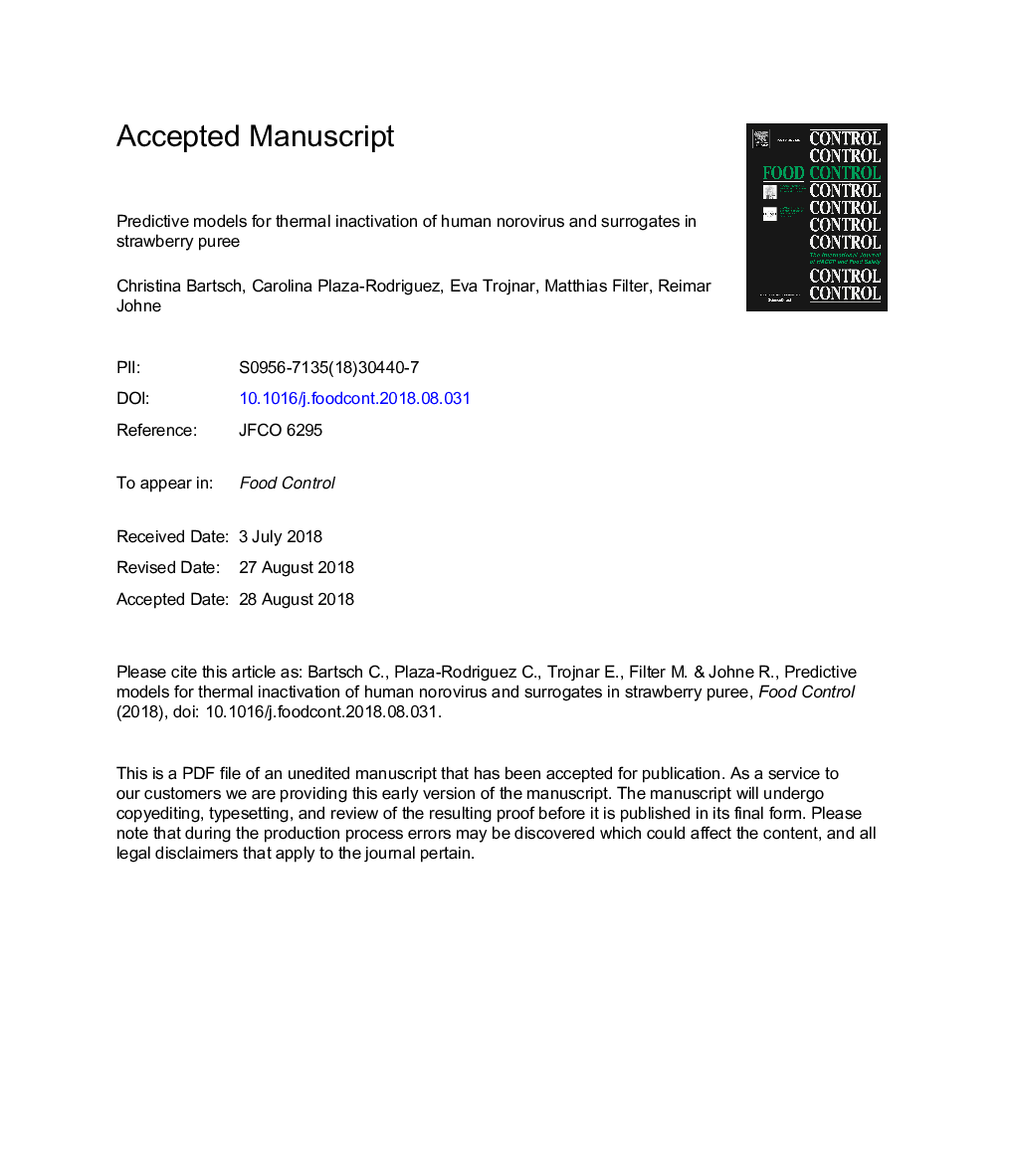| کد مقاله | کد نشریه | سال انتشار | مقاله انگلیسی | نسخه تمام متن |
|---|---|---|---|---|
| 10144907 | 1646320 | 2019 | 36 صفحه PDF | دانلود رایگان |
عنوان انگلیسی مقاله ISI
Predictive models for thermal inactivation of human norovirus and surrogates in strawberry puree
ترجمه فارسی عنوان
مدل های پیش بینی کننده برای غیر فعال سازی حرارتی نانو ویروس انسان و جایگزینی در پوره توت فرنگی
دانلود مقاله + سفارش ترجمه
دانلود مقاله ISI انگلیسی
رایگان برای ایرانیان
کلمات کلیدی
موضوعات مرتبط
علوم زیستی و بیوفناوری
علوم کشاورزی و بیولوژیک
دانش تغذیه
چکیده انگلیسی
Frozen berries contaminated with human norovirus (hNV) have been frequently identified as cause of foodborne gastroenteritis. To prevent virus transmission, heating can be applied to the berries. Here, the thermal inactivation of hNV in strawberry puree was assessed. Due to the lack of a reliable system for hNV infectivity assessment, capsid integrity assays using RNase treatment prior to detection of protected viral RNA were applied. In addition, murine norovirus (MNV) and Tulane virus (TV) served as surrogates. The method was optimized to allow direct comparisons between the viruses. The results indicated that infectious MNV is slightly more stable than TV. Both viruses were completely inactivated (>7 log10 reductions) after treatment at 80â¯Â°C for 8â¯s. TV infectivity decreased faster than capsid-protected RNA. In addition, TV showed a markedly lower stability compared to hNV using capsid integrity assays. Predictive models were generated for all viruses and D- and É-values were calculated. The tertiary model covering reduction of hNV capsid-protected RNA between 50 and 80â¯Â°C suggests that temperatures under 70â¯Â°C are not reliable for inactivation. About 3.5 log10 reductions are achieved by heating at 80â¯Â°C for 8â¯s. Further studies should focus on the model validation with direct hNV infectivity data.
ناشر
Database: Elsevier - ScienceDirect (ساینس دایرکت)
Journal: Food Control - Volume 96, February 2019, Pages 87-97
Journal: Food Control - Volume 96, February 2019, Pages 87-97
نویسندگان
Christina Bartsch, Carolina Plaza-Rodriguez, Eva Trojnar, Matthias Filter, Reimar Johne,
